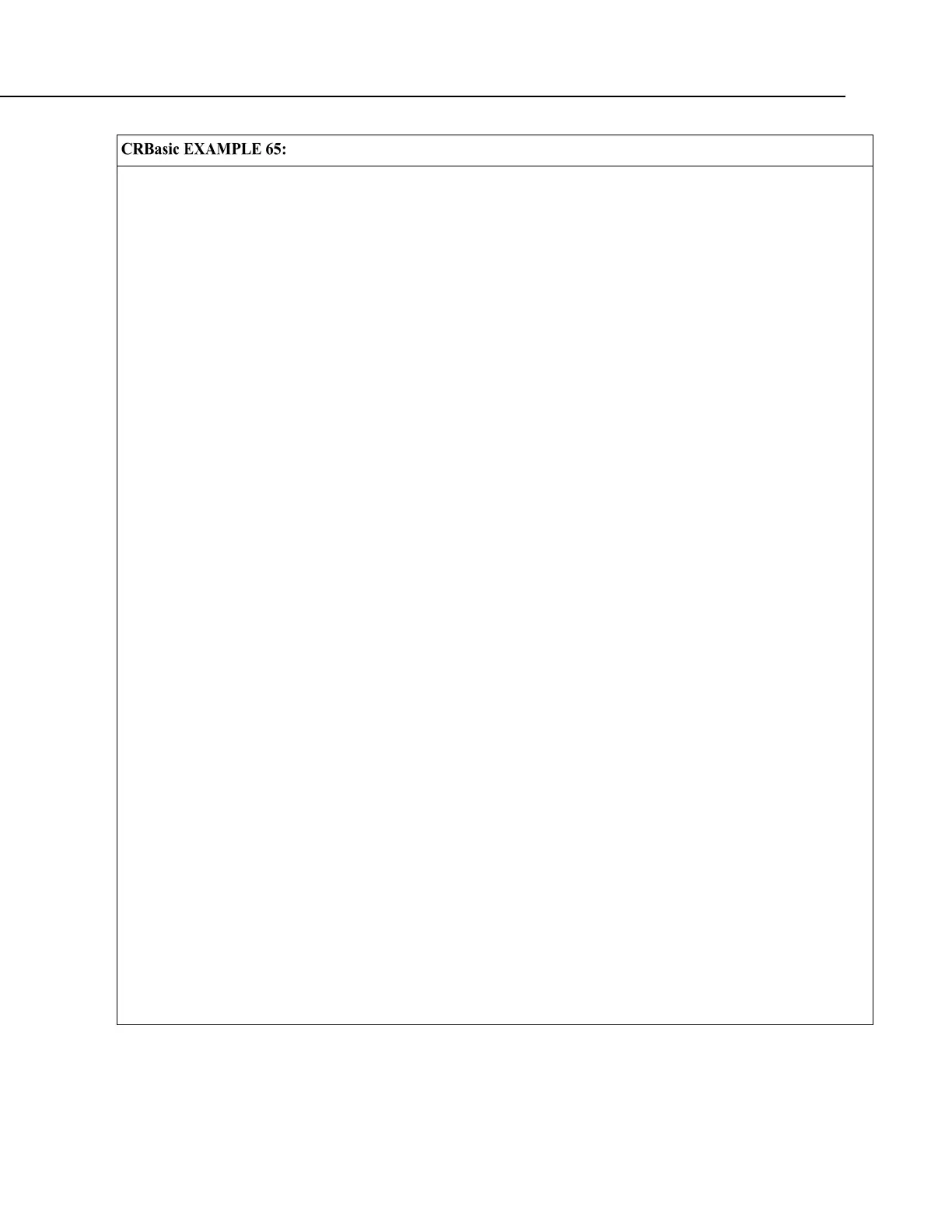Section 7. Installation
Concatenation of Numbers and Strings
'This program example demonstrates the concatenation of numbers and strings to variables
'declared As Float and As String.
'
'Declare Variables
Public Num(12) As Float
Public Str(2) As String
Dim I
BeginProg
Scan(1,Sec,0,0)
I = 0 'Set I to zero
'Data type of the following destination variables is Float
'because Num() array is declared As Float.
I += 1 'Increment I by 1 to clock through sequential elements of the Num() array
'As shown in the following expression, if all parameter are numbers, the result
'of using '+' is a sum of the numbers:
Num(I) = 2 + 3 + 4 '= 9
'Following are examples of using '+' and '*' when one or more parameters are strings.
'Parameters are processed in the standard order of operations. In the order of
'operation, once a string or an '&' is processed, all following parameters will
'be processed (concatenated) as strings:
I += 1
Num(I) = "1" + 2 + 3 + 4 '= 1234
I += 1
Num(I) = 1 + "2" + 3 + 4 '= 1234
I += 1
Num(I) = 1 + 2 + "3" + 4 '= 334
I += 1
Num(I) = 1 + 2 + 3 + "4" '= 64
I += 1
Num(I) = 1 + 2 + "3" + 4 + 5 + "6" '= 33456
I += 1
Num(I) = 1 + 2 + "3" + (4 + 5) + "6" '= 3396
I += 1
Num(I) = 1 + 2 + "3" + 4 * 5 + "6" '= 33206
I += 1
Num(I) = 1 & 2 + 3 + 4 '= 1234
I += 1
Num(I) = 1 + 2 + 3 & 4 '= 64
'If a non-numeric string is attempted to be processed into a float destination,
'operations are truncated at that point
I += 1
Num(I) = 1 + 2 + "hey" + 4 + 5 + "6" '= 3
I += 1
Num(I) = 1 + 2 + "hey" + (4 + 5) + "6" '= 3
'The same rules apply when the destination is of data type String, except in the
'case wherein a non-numeric string is encountered as follows. Data type of the

